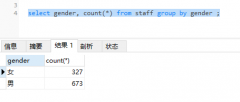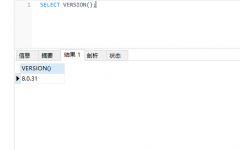SQL Efficiency: WHERE IN Subquery vs. JOIN then GROUP(SQL 效率:WHERE IN 子查询 vs. JOIN 然后 GROUP)
问题描述
例如,我想获取应用了特定标签的所有项目的列表.我可以执行以下任一操作:
As an example, I want to get the list of all items with certain tags applied to them. I could do either of the following:
SELECT Item.ID, Item.Name
FROM Item
WHERE Item.ID IN (
SELECT ItemTag.ItemID
FROM ItemTag
WHERE ItemTag.TagID = 57 OR ItemTag.TagID = 55)
或
SELECT Item.ID, Item.Name
FROM Item
LEFT JOIN ItemTag ON ItemTag.ItemID = Item.ID
WHERE ItemTag.TagID = 57 OR ItemTag.TagID = 55
GROUP BY Item.ID, Item.Name
或者完全不同的东西.
总的来说(假设有一个通用规则),什么是更有效的方法?
In general (assuming there is a general rule), what's a more efficient approach?
推荐答案
SELECT Item.ID, Item.Name
FROM Item
WHERE Item.ID IN (
SELECT ItemTag.ItemID
FROM ItemTag
WHERE ItemTag.TagID = 57 OR ItemTag.TagID = 55)
或
SELECT Item.ID, Item.Name
FROM Item
LEFT JOIN ItemTag ON ItemTag.ItemID = Item.ID
WHERE ItemTag.TagID = 57 OR ItemTag.TagID = 55
GROUP BY Item.ID
您的第二个查询将无法编译,因为它引用了 Item.Name 而没有对其进行分组或聚合.
Your second query won't compile, since it references Item.Name without either grouping or aggregating on it.
如果我们从查询中删除 GROUP BY:
If we remove GROUP BY from the query:
SELECT Item.ID, Item.Name
FROM Item
JOIN ItemTag
ON ItemTag.ItemID = Item.ID
WHERE ItemTag.TagID = 57 OR ItemTag.TagID = 55
这些仍然是不同的查询,除非 ItemTag.ItemId 是一个 UNIQUE 键并被标记为这样.
these are still different queries, unless ItemTag.ItemId is a UNIQUE key and marked as such.
SQL Server 能够检测 UNIQUE 列上的 IN 条件,并且只会转换 IN> 条件转换为 JOIN.
SQL Server is able to detect an IN condition on a UNIQUE column, and will just transform the IN condition into a JOIN.
如果ItemTag.ItemID不是UNIQUE,第一个查询会使用一种SEMI JOIN算法,这种算法在SQL Server.
If ItemTag.ItemID is not UNIQUE, the first query will use a kind of a SEMI JOIN algorithm, which are quite efficient in SQL Server.
您可以将第二个查询转换为 JOIN:
You can trasform the second query into a JOIN:
SELECT Item.ID, Item.Name
FROM Item
JOIN (
SELECT DISTINCT ItemID
FROMT ItemTag
WHERE ItemTag.TagID = 57 OR ItemTag.TagID = 55
) tags
ON tags.ItemID = Item.ID
但是这个比 IN 或 EXISTS 效率低一点.
but this one is a trifle less efficient than IN or EXISTS.
有关更详细的性能比较,请参阅我博客中的这篇文章:
See this article in my blog for a more detailed performance comparison:
INvs.JOINvs.EXISTS
INvs.JOINvs.EXISTS
这篇关于SQL 效率:WHERE IN 子查询 vs. JOIN 然后 GROUP的文章就介绍到这了,希望我们推荐的答案对大家有所帮助,也希望大家多多支持编程学习网!
本文标题为:SQL 效率:WHERE IN 子查询 vs. JOIN 然后 GROUP


基础教程推荐
- 从字符串 TSQL 中获取数字 2021-01-01
- 带更新的 sqlite CTE 2022-01-01
- 如何在 CakePHP 3 中实现 INSERT ON DUPLICATE KEY UPDATE aka upsert? 2021-01-01
- MySQL根据从其他列分组的值,对两列之间的值进行求和 2022-01-01
- 使用 VBS 和注册表来确定安装了哪个版本和 32 位 2021-01-01
- MySQL 5.7参照时间戳生成日期列 2022-01-01
- 带有WHERE子句的LAG()函数 2022-01-01
- ORA-01830:日期格式图片在转换整个输入字符串之前结束/选择日期查询的总和 2021-01-01
- while 在触发器内循环以遍历 sql 中表的所有列 2022-01-01
- CHECKSUM 和 CHECKSUM_AGG:算法是什么? 2021-01-01

















